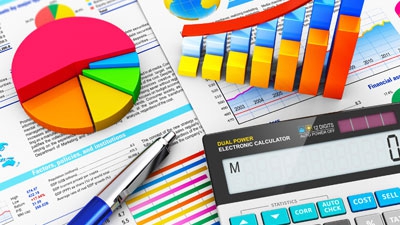Table of Contents
What is Data Visualization?
Data visualization is the graphic representation of data in forms such as charts, graphs, plots, infographics, and even animations. The idea is to make complex data more understandable, accessible, and usable. While spreadsheets and numbers provide raw information, visual elements can make that information come to life, offering insights that may not be immediately obvious. Data visualization isn’t just a fancy way of presenting statistics; it’s a robust analytical approach that enables decision-makers to see analytics presented visually, so they can grasp difficult concepts or identify new patterns. This article courtesy of geniusupdates.com explores data visualization further:
Value to Internal Operational Processes
One of the most critical applications of data visualization lies in internal operational processes. For instance, consider a heat map that shows which departments in your organization are performing well and which require immediate intervention. Or, envision a real-time dashboard that displays key performance indicators (KPIs), such as customer engagement, sales metrics, or inventory levels. These visual tools can:
- Aid in quick decision-making by offering easily interpretable data.
- Highlight trends, spikes, and outliers that may require attention.
- Simplify complex data sets into understandable metrics.
The ability to identify bottlenecks, inefficiencies, or underperforming sectors at a glance allows for quicker response and, therefore, increased productivity and efficiency.
Value to Marketing to Customers
In an era where attention spans are notoriously short, capturing your customer’s eye is half the battle. Infographics, interactive charts, or animated explainer videos can provide a rich customer experience. Data visualization tools can:
- Make your value proposition clear and compelling.
- Break down complex services or products into digestible chunks of information.
- Help customers make educated decisions by presenting them with comparative data.
By using visuals, you’re not just making your products and services easier to understand; you’re also significantly enhancing your brand’s appeal.
Value to Investors
For investors, seeing is believing. Venture capitalists or angel investors are often presented with tons of data, and their time is limited. By utilizing elegant and comprehensive data visualizations in your pitch decks or annual reports, you can:
- Highlight your company’s growth metrics clearly.
- Demonstrate market trends that favor your business model.
- Show the scalability of your business through projections.
Investors appreciate data that’s straightforward and easy to interpret, as it helps them make faster and more informed decisions.
Helpful Data Visualization Tools
There’s a plethora of tools that can help you create impactful visualizations. Some of these are:
- Tableau: Ideal for creating complex and robust visualizations.
- Microsoft Power BI: Known for its user-friendly interface and seamless integration with other Microsoft Office products.
- Google Data Studio: Provides excellent functionalities for free and integrates well with other Google services.
- D3.js: A JavaScript library for creating dynamic, interactive data visualizations in web browsers.
Creative Ways to Represent Data
While charts and graphs are the most common methods of data visualization, they’re not the only options. One creative way to represent data is by using GIFs. Imagine showcasing a changing trend over time by animating the data points. For example, a GIF could depict how market share for various companies in an industry has evolved over the past decade. This dynamic representation can provide more context than a static image, capturing shifts and trends in a digestible yet impactful format.
You can easily make your own GIFs from MP4 videos using free online tools. Simply upload a video, trim your clip, choose a file size, and download your GIF. Other unconventional methods include 3D plots, geographic heat maps, and even virtual reality environments for immersive data experiences.
The Ethics and Responsibility in Data Visualization
While we champion the numerous advantages of data visualization, it’s equally important to address the ethical responsibility that comes with it. Misleading or manipulative visuals can have severe consequences, from skewing business decisions to spreading false information. Here are some guidelines to keep in mind:
- Accuracy: Always ensure that the data you’re visualizing is accurate and up-to-date. Incorrect data, even when presented appealingly, can lead to wrong decisions.
- Transparency: Make the sources of your data accessible and clear. Transparency enhances credibility and allows others to validate your information.
- Inclusivity: Ensure that your visualizations are accessible to people with disabilities. Tools like color contrast checkers can help you create visuals that are legible to everyone, including those with color vision deficiencies.
- Integrity: Avoid cherry-picking data or using scales that exaggerate differences to make your point more compelling. Your visualizations should aim to inform, not deceive.
By adhering to ethical guidelines, you not only create a trustworthy environment for decision-making but also enhance the credibility and accountability of your organization. Adding this layer of ethical consideration ensures that the data serves everyone justly, fulfilling its role as a cornerstone for rational decision-making.
In the age of information, data visualization serves as a bridge between complex data landscapes and human understanding. Whether you’re looking to streamline internal operations, capture customer interest, or woo investors, mastering the art and science of data visualization is critical. With a plethora of tools at your disposal, getting started has never been easier. So why settle for spreadsheets and numbers when you can tell a more compelling story with visuals?





